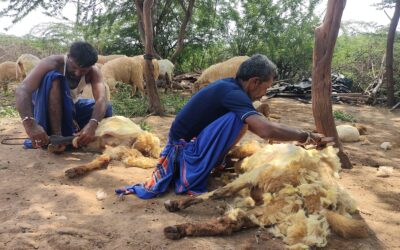From Sukma bus stand I got on a bus to Jagdalpur. I have to reach a place called Lathipara, around 30 kilometers away from Sukma. The bus is traveling dead slowly, after one and a half hour journey I got down on the stop – Laskepara. Now there is a 2-mile walk to Lathipara. On the way, it’s mostly paddy fields; also Mango and Mahua trees. Lathipara is a small village that has less than 30 families, mainly Dhuruva speaking tribes. Most of the families rely on rice cultivation apart from that like most of the tribes in Bastar their sustenance also revolves around non timber forest produce collection of mahua, tadi, salphi chind and tendu patta. But the interesting feature about Lathipara is that there is a primary school which is one among the 92,275 schools which are run by single teachers. The Right to Education act clearly states that there should not be any single teacher schools and the act also directs states to have at least two teachers when the student strength is between one and sixty.
Even after ten years the RTE act coming into effect this is a distant dream. Madhya Pradesh, Uttar Pradesh, and Rajasthan put together comprise around 50% of the single teacher schools in the country.

Especially in primary classrooms when the pedagogy demands individual attention for each student what they get is a unified way of teaching. Even the teachers in single teacher schools are muddled with a lot of works like teaching, academic work, interact with the education department, visit treasury for fund collection, and conduct meetings with parents, and so on. All these lead to less focus in teaching and then, later on, lead to muti grade multi-level learning issues for the children and substandard learning levels. 80 students from different grades handled by a single teacher. Education completely becomes futile and farce. The competent issue here is that in rural and remote areas where people are not willing to work. Even getting teachers to teach in the inaccessible areas is very hard and it is becoming physically and economically difficult then the age-old idea of providing schools where children live has to be brought back to fill the existing gap.

Lathipara school is located almost at the end of the village. I had to pass through several houses in a 5 feet road and fences made through big branches of trees. There is a handpump near the school entrance where the villagers come to collect water. There is a water tank inside the school that is powered by solar panels. The school has an electricity connection and there is no separate toilet for girls or boys nor there is water in the taps. There is an Anganwadi inside the school compound where smaller children less than ten in number come. They don’t know to read or write and all of them speak their mother tongue Dhurva. The teacher in Lathipara school has been working there since 2005. Also, there is a maid who prepares the mid-day meal for the children from the same village. The teacher handles all the works alone be it teaching, community engagement, conducting exams, administrative works, and handling other school-related affairs. Latipara school is a one woman army. Since the madam is working for the last fifteen years she has a good rapport with the community.

All the children I saw in Lathipara were so enthusiastic to study. Most of their uniforms were torn and few had textbooks. Since all of them know each other, there are also playful at times. The majority of them don’t speak Hindi. But they were able to understand and was responding to the teacher. They communicate in Dhurva in the classroom since that’s what they are used to but the teacher consciously asks them to speak in Hindi.
The three children of 5th standard in Lathipara school did match the level of 5th standard children in portacabins in both strength and weakness; which made me realize that even though the environment of portacabins and that of the single teacher schools is entirely different they have the same problems in learning. The advantage in single teacher school is it’s proximity to the community and the parents.
This can be leveraged to spread awareness of the importance of knowledge and give them ample push needed for the children to find time to study at home. As of now, there is less community engagement happening there and this will be a very good next step.

The Lathipara school itself is ironic to the single teacher schools in the sense that it becomes both the problem and solution. How the single teacher classrooms are a problem is being mentioned above but how the same Lathipara becomes a solution is what makes it interesting. Since there are fewer children and reaching other schools require at least five kilometer travel, the age-old solution on providing a school where twenty or more children are living is practically happening in Lathipara. I wish to believe when this school was established in 1997 the aim was also the same. Now since giving a school is not a solution to the multi-grade multi-level learning issues – here the teacher in the school needs to be given capacity building training and should be taught how to give enough attention to differentiated learning to the children.
With the help of rural NGOs which works in the area improvements in the quality of education can be made possible. The issue is not isolated and simple. This is a matter concerning around one lakh schools around the nation and more than twenty lakh children enrolled in them. Hence the state government should be taking more care to address the problem even these children have the right to get good quality education rather than education for namesake.




0 Comments